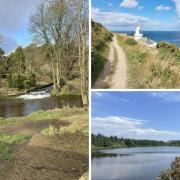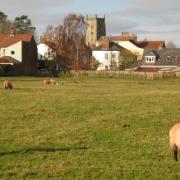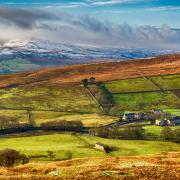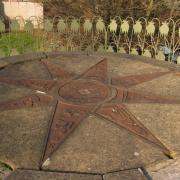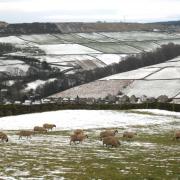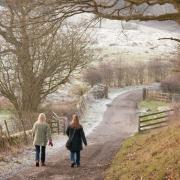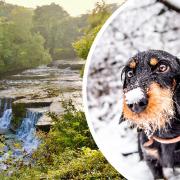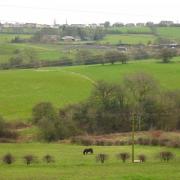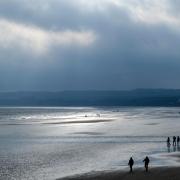The Yorkshire Dales section of the Pennine Bridleway opens this month and brings with it many new business opportunities as Terry Fletcher reports Photographs by Joan Russell
The print version of this article appeared in the June 2012 issue of Yorkshire Life
We can deliver a copy direct to your door – order online here
After an eight year wait and almost �2million spent, horse riders and cyclists can at last saddle up for the Yorkshire Dales’ newest adventure.
The 52-mile-long (84km) section of Pennine Bridleway through the national park finally opens this month, creating the latest link in what will eventually be a 200-mile (330km) route from the Peak District to Cumbria.
At times the process has seemed to have as many twists and turns as the trail itself. Initially its creators pored over maps, painstakingly trying to knit together existing stretches of bridleway and old pack horse routes.
Then they had to persuade local landowners to bridge the gaps by agreeing to brand new rights of way across their farms and the moors.Unlike footpaths, which can only be used by pedestrians, bridleways are open to horses and cyclists too and this is the first time anyone has ever tried to create such a purpose-built long distance route in Britain.
The main network was trodden into existence centuries ago by travellers on horseback and stockmen and packhorse traders moving their animals around the country. But many of their routes became today’s trunk roads making long distance riding dangerous. The challenge to Natural England, the government-backed agency responsible for the new route, was to create safe and pleasant alternatives away from heavy traffic.
Project officer, Anna Righton, said: ‘It has been incredibly complicated. Creating a bridleway is much more difficult than a footpath because of all the special issues surrounding safety and sustainability where horses are involved. As a result the most time-consuming job has been getting the agreement of landowners. Not all of them were convinced that it was a good idea at first but in the end they have all agreed.
‘But even then it was a question of agreeing the best route that worked for them and for users, finding a way that was sustainable and did not harm the landscape or the heritage. After that it all had to go to the solicitors. So far on the bridleway we have negotiated 140 new agreements and we have at least another 20 to go before it will be completely open from Derbyshire to Cumbria,’ she said.
The bridleway starts at Middleton Top near Matlock and winds its way up through the Peak District before splitting to form the 47-mile (117km) Mary Townley Loop, one arm of which passes through Calderdale, before the two variations rejoin at Worsthorne. From there it heads north past Gisburn and Long Preston to Settle, Austwick, Feizor, Selside, Newby Head and the Moorcock Inn and then crossing into the county of Cumbria.
Along the way several lengthy sections of new bridleway have had to be created from scratch including a two-and-a-half-mile (4km) section near Cam High Road, and a one-and-a-half-mile (2.8km) stretch at Far Moor, which included building a striking new bridge across the Ribble, near Selside.
One crucial element in persuading some landowners was the economic benefits that the bridleway is already bringing to areas where it has opened. Dozens of new businesses have opened along the route to cater for riders, cyclists and walkers, providing accommodation, provisions and moving baggage. Dozens of others have seen turnover increase as visitor numbers rose.
One of those setting out to cater for riders is Gill Woods, of Selside. A keen horsewoman herself, she offers grazing for horses and beds for riders.
She said: ‘This is a beautiful area but there is also deprivation so we hope that the bridleway will bring new people into the area and create new jobs and opportunities for local people. It is ideal for a farmer who can turn over a field to horses and open up a bedroom or two for B&B. I am sure there will be no shortage of people who want to use the bridleway if we can just offer the infrastructure. People need to know their horses are safe and their tack is secure.’
Gill is also planning to offer guided rides and multi-day holidays based around the bridleway and other local routes. She is also involved with Ride Yorkshire, an organisation which is planning to host a number of special rides to highlight the opportunities.
Janet Cochrane, a director of the organisation, said: ‘The Pennine Bridleway is a fantastic resource and long distance riding is becoming more popular. Not everyone will want to use it, some prefer competitions and show jumping and others like to stay close to home but once riders gain in confidence they realise they can go further afield. For me riding in the countryside is what it is all about.’
Even so horse riders will make up only a fifth of so of users with a third being walkers and the rest mountain bikers. The 10-mile-long (16km) Settle Loop off the main bridleway opened in 2005 and has helped to make the town a centre for cyclists. Mick Mounsey, manager of the Off the Rails cycle shop in Settle said: ‘The Loop has been brilliant for the area and I think that the bridleway will be even better. A lot of people come in and tell us they are here to do the Loop. It has benefited the whole town.’
For details of the Pennine Bridleway and maps of the route go to nationaltrail.co.uk/Penninebridleway and for details of the inaugural ride visit rideyorkshire.org or call 01759 368303.



